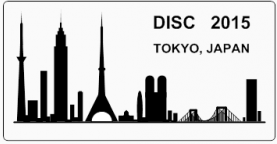Computing in Additive Networks with Bounded-Information Codes
Abstract
This paper studies the theory of the additive wireless network model, in which the received signal is abstracted as an addition of the transmitted signals. Our central observation is that the crucial challenge for computing in this model is not high contention, as assumed previously, but rather guaranteeing a bounded amount of information in each neighborhood per round, a property that we show is achievable using a new random coding technique. Technically, we provide efficient algorithms for fundamental distributed tasks in additive networks, such as solving various symmetry breaking problems, approximating network parameters, and solving an asymmetry revealing problem such as computing a maximal input. The key method used is a novel random coding technique that allows a node to successfully decode the received information, as long as it does not contain too many distinct values. We then design our algorithms to produce a limited amount of information in each neighborhood in order to leverage our enriched toolbox for computing in additive networks.
Origin : Files produced by the author(s)
Loading...
